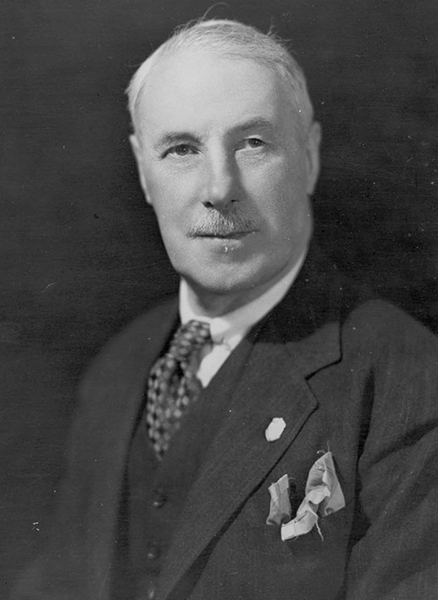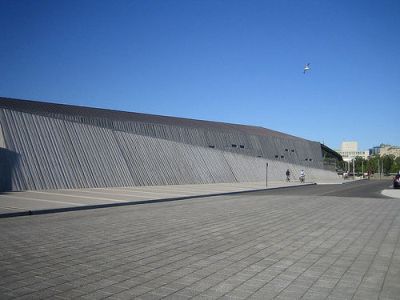Pearkes, George Randolph
- Date of birth:
- February 28th, 1888 (Watford/Hertfordshire, United Kingdom)
- Date of death:
- May 30th, 1984 (Victoria/British Columbia, Canada)
- Service number:
- 107473
- Nationality:
- Canadian
Biography
George Pearkes (VC recipient) was wounded five times during the First World War, including:
March 1916: Gunshot wound to the arm.
1 October 1916: "Wounded slightly at duty"
15 November 1918: Severe wounds as the result of an exploding shell. Abdomen and arm. Was operated for 6 hours.
Promotions:
16 April 1915: Lance Corporal
13 September 1915: Corporal
4 March 1916: Sergeant
30 April 1916: Temporary Lieutenant
16 October 1916: Acting Captain
18 October 1916: Acting Major
15 January 1917: Temporary Captain
30 November 1917: Temporary Major
7 January 1918: Acting Lt. Colonel
27 March 1918: Temporary Lt. Colonel
Military career:
1911: North-West Mounted Police
1915: 5th Battalion Canadian Mounted Rifles
?: Princess Patricia's Light Infantry
16 January 1920: Graduaded, Staff College
?: Royal Military College of Canada
1936-1938: Imperial Defence College
1938-1939: District Officer Commanding, 13th Military District
1939: 2nd Canadian Armoured Brigade, The Seaforth Highlanders of Canada
1940: 1st Canadian division
November 1941: Canadian Corps
August 1942: General Officer Commanding, Chief Pacific Command
February 1945: Retired
Political career:
1945-1960: Federal politics
1957-1960: Minister of National Defence
13 October 1960 - July 1968: Lieutenant Governor of British Columbia
Do you have more information about this person? Inform us!
- Period:
- First World War (1914-1918)
- Rank:
- Lieutenant
- Unit:
- 5th Battalion, Canadian Mounted Rifles, Canadian Expeditionary Force
- Awarded on:
- December 21st, 1916
- Period:
- First World War (1914-1918)
- Rank:
- Acting Major
- Unit:
- 5th Battalion, Canadian Mounted Rifles, Canadian Expeditionary Force
- Awarded on:
- January 11th, 1918
Just prior to the advance Maj. Pearkes -was wounded in the left thigh. Regardless of his wound, he continued to lead his men with the utmost gallantry, despite many obstacles.
At a particular stage of the .attack his further advance was threatened by a strong point which was an objective of the battalion on his left, but which they had not succeeded in capturing. Quickly appreciating the situation, he captured and held this point, thus enabling his further advance to be successfully pushed forward. It was entirely due to his determination
and fearless personality that he was able to maintain his objective with the small number of men at his command against repeated enemy counter-attacks, both his flanks being unprotected for a considerable depth meanwhile.
His appreciation of the situationthroughout and the reports rendered by him were invaluable to his Commanding Officer in making dispositions of troops to hold the position captured.
He showed throughout a supreme contempt of danger and wonderful 'powers of control and leading.
- Period:
- First World War (1914-1918)
- Rank:
- Lieutenant-Colonel
- Unit:
- 116th Canadian Infantry Battalion, 2nd Central Ontario Regiment Canadian, Expeditionary Force
- Awarded on:
- January 7th, 1919
- Period:
- First World War (1914-1918)
- Rank:
- Lieutenant-Colonel
- Unit:
- 116th Canadian Infantry Battalion, 2nd Central Ontario Regiment Canadian, Expeditionary Force
- Awarded on:
- January 11th, 1919
Commanding officer
- Period:
- Second World War (1939-1945)
- Rank:
- Major General
- Unit:
- Pacific Command
- Awarded on:
- October 1942
Received in Kiska, Alaska.
- Period:
- Second World War (1939-1945)
- Rank:
- Major General
- Unit:
- Pacific Command
- Awarded on:
- June 2nd, 1943
- Rank:
- Major General
- Unit:
- Lieutenant Governor of British Columbia
- Awarded on:
- 1967
- Period:
- First World War (1914-1918)
- Period:
- First World War (1914-1918)
- Period:
- First World War (1914-1918)
- Period:
- Second World War (1939-1945)
- Period:
- Second World War (1939-1945)
- Period:
- First World War (1914-1918)
- Period:
- First World War (1914-1918)
- Period:
- First World War (1914-1918)
Sources
- - https://www.thegazette.co.uk/London/issue/29872/supplement/12436/data.pdf
- Page 722 | Supplement 30471, 8 January 1918 | London Gazette | The Gazette
- https://www.thegazette.co.uk/London/issue/36034/supplement/2477/data.pdf
- https://www.thegazette.co.uk/London/issue/31119/supplement/587/data.pdf
- https://www.thegazette.co.uk/London/issue/31109/supplement/314/data.pdf
- https://www.thegazette.co.uk/London/issue/42409/page/5106/data.pdf
- Service Record
- Victoria Cross Bar - Canadian General Pearkes
- DHH - Victoria Cross Bios - George Randolph Pearkes
- Major George Randolph Pearkes
- warmuseum.ca
- For Most Conspicuous Bravery: A Biography of Major-General George R. Pearkes - Reginald H. Roy
- The Mention in Dispatches
- The Governor General of Canada > Honours - Pearkes























